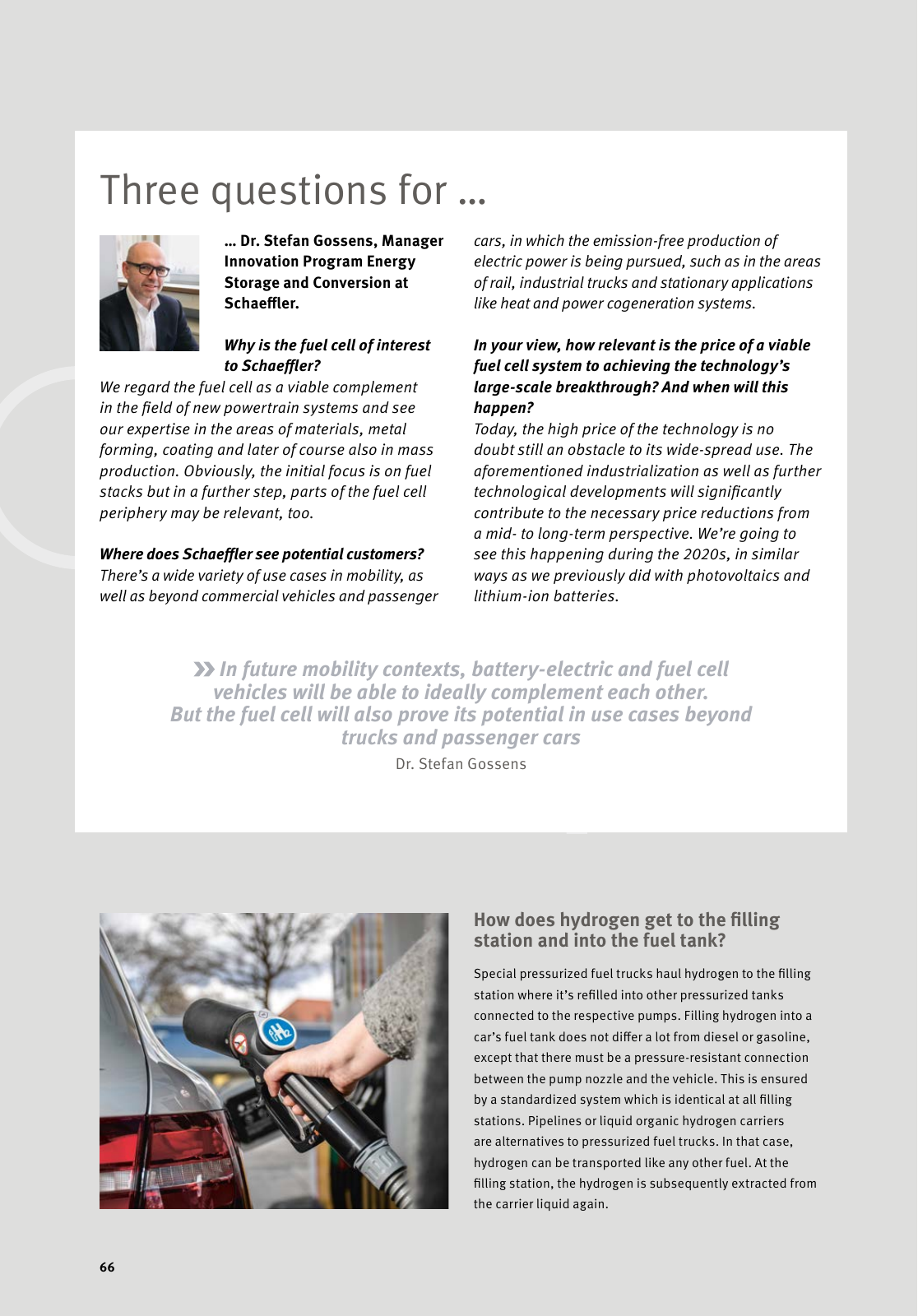Three questions for Why is the fuel cell of interest to Schaeffl er We regard the fuel cell as a viable complement in the fi eld of new powertrain systems and see our expertise in the areas of materials metal forming coating and later of course also in mass production Obviously the initial focus is on fuel stacks but in a further step parts of the fuel cell periphery may be relevant too Where does Schaeffl er see potential customers There s a wide variety of use cases in mobility as well as beyond commercial vehicles and passenger cars in which the emission free production of electric power is being pursued such as in the areas of rail industrial trucks and stationary applications like heat and power cogeneration systems In your view how relevant is the price of a viable fuel cell system to achieving the technology s large scale breakthrough And when will this happen Today the high price of the technology is no doubt still an obstacle to its wide spread use The aforementioned industrialization as well as further technological developments will signifi cantly contribute to the necessary price reductions from a mid to long term perspective We re going to see this happening during the 2020s in similar ways as we previously did with photovoltaics and lithium ion batteries Dr Stefan Gossens Manager Innovation Program Energy Storage and Conversion at Schaeffl er How does hydrogen get to the fi lling station and into the fuel tank Special pressurized fuel trucks haul hydrogen to the fi lling station where it s refi lled into other pressurized tanks connected to the respective pumps Filling hydrogen into a car s fuel tank does not diff er a lot from diesel or gasoline except that there must be a pressure resistant connection between the pump nozzle and the vehicle This is ensured by a standardized system which is identical at all fi lling stations Pipelines or liquid organic hydrogen carriers are alternatives to pressurized fuel trucks In that case hydrogen can be transported like any other fuel At the fi lling station the hydrogen is subsequently extracted from the carrier liquid again In future mobility contexts battery electric and fuel cell vehicles will be able to ideally complement each other But the fuel cell will also prove its potential in use cases beyond trucks and passenger cars Dr Stefan Gossens 66

Hinweis: Dies ist eine maschinenlesbare No-Flash Ansicht.
Klicken Sie hier um zur Online-Version zu gelangen.
Klicken Sie hier um zur Online-Version zu gelangen.